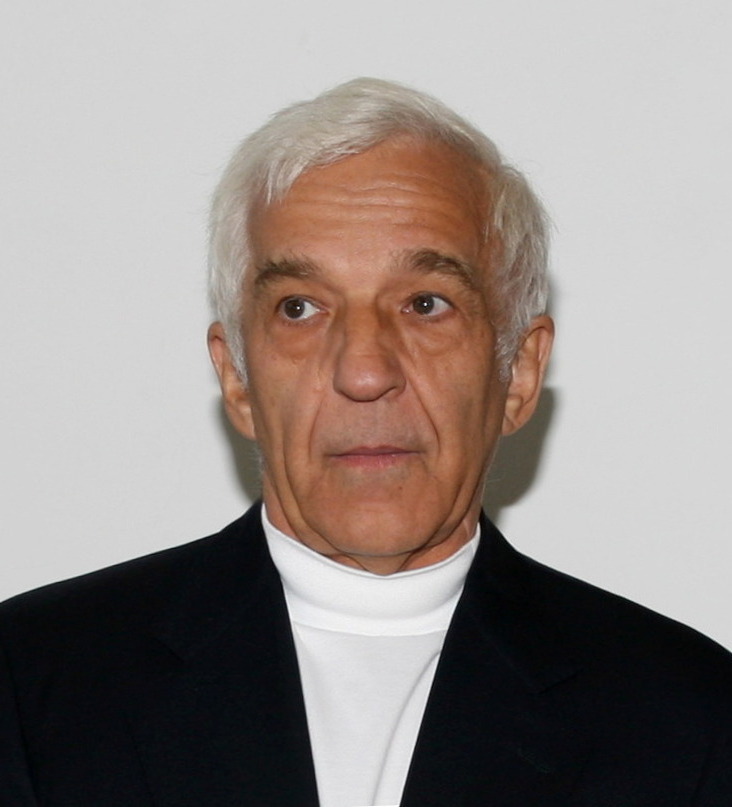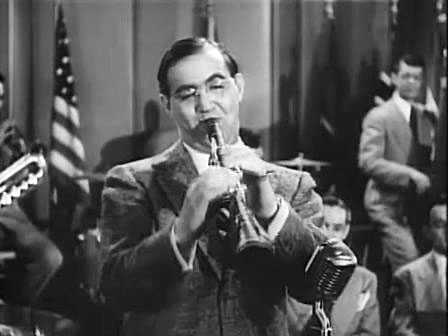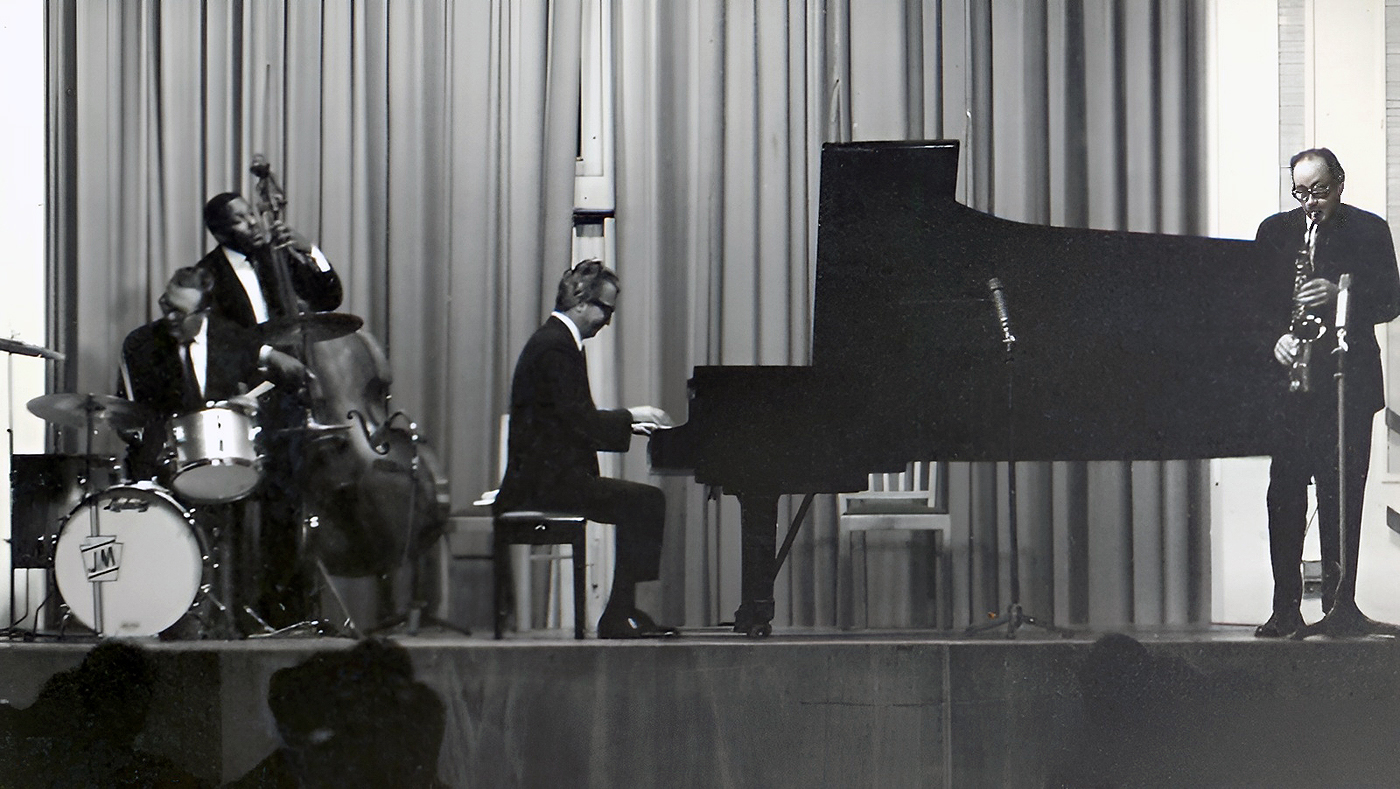|
Ebony Concerto (Stravinsky)
Igor Stravinsky wrote the ''Ebony Concerto'' in 1945 (finishing the score on December 1) for the Woody Herman band known as the First Herd. It is one in a series of compositions commissioned by the bandleader/clarinetist featuring solo clarinet, and the score is dedicated to him. It was first performed on March 25, 1946 in Carnegie Hall in New York City, by Woody Herman's Band, conducted by Walter Hendl. History Stravinsky's engagement with jazz dates back to the closing years of the First World War, the major jazz-inspired works of that period being ''L'histoire du soldat'', the ''Ragtime'' for eleven instruments, and the ''Piano-Rag-Music''. Although traces of jazz elements, especially blues and boogie-woogie, can be found in his music throughout the 1920s and 1930s, it was only with the ''Ebony Concerto'' that Stravinsky once again incorporated features of jazz into a composition on a far-reaching scale. The title was originally suggested to Stravinsky by Aaron Goldmark, of Lee ... [...More Info...] [...Related Items...] OR: [Wikipedia] [Google] [Baidu] |
Igor Stravinsky, Roger Baulu, Jean-Marie Beaudet 1945
Igor may refer to: People * Igor (given name), an East Slavic given name and a list of people with the name * Mighty Igor (1931–2002), former American professional wrestler * Igor Volkoff, a professional wrestler from NWA All-Star Wrestling * Igorrr, (born 1984) a French musician Fictional characters * Igor (character), a stock character * Igor Karkaroff, character in the ''Harry Potter'' series * Igor, the eagle in ''Count Duckula'' * Igor, the first enemy character in fighting game ''Human Killing Machine'' * Igor, a baboon with shape-shifting powers in Marvel comics (see List of fictional monkeys) * Igor, a reoccurring character in the ''Persona'' series * Igor, a character in ''Young Frankenstein'' * Igor Nevsky, an assassin in ''Air Force One'' (film) Arts, entertainment, and media * ''Igor'' (album), a 2019 album by Tyler, The Creator * ''Igor'' (film), a 2008 American animated film * '' Igor: Objective Uikokahonia'', a 1994 Spanish MS-DOS PC video game released C ... [...More Info...] [...Related Items...] OR: [Wikipedia] [Google] [Baidu] |
Concerto Grosso
The concerto grosso (; Italian for ''big concert(o)'', plural ''concerti grossi'' ) is a form of baroque music in which the musical material is passed between a small group of soloists (the '' concertino'') and full orchestra (the ''ripieno'', ''tutti'' or ''concerto grosso''). This is in contrast to the solo concerto which features a single solo instrument with the melody line, accompanied by the orchestra. History The form developed in the late seventeenth century, although the name was not used at first. Alessandro Stradella seems to have written the first music in which two groups of different sizes are combined in the characteristic way. The name was first used by Giovanni Lorenzo Gregori in a set of ten compositions published in Lucca in 1698. The first major composer to use the term ''concerto grosso'' was Arcangelo Corelli. After Corelli's death, a collection of twelve of his ''concerti grossi'' was published. Not long after, composers such as Francesco Geminiani, Pietro ... [...More Info...] [...Related Items...] OR: [Wikipedia] [Google] [Baidu] |
Vladimir Ashkenazy
Vladimir Davidovich Ashkenazy (russian: Влади́мир Дави́дович Ашкена́зи, ''Vladimir Davidovich Ashkenazi''; born 6 July 1937) is an internationally recognized solo pianist, chamber music performer, and conductor. He is originally from Russia and has held Icelandic citizenship since 1972. He has lived in Switzerland since 1978. Ashkenazy has collaborated with well-known orchestras and soloists. In addition, he has recorded a large repertoire of classical and romantic works. His recordings have earned him five Grammy awards and Iceland's Order of the Falcon. Early life Vladimir Ashkenazy was born in Gorky, Soviet Union (now Nizhny Novgorod, Russia), to pianist and composer David Ashkenazi and to actress Yevstolia Grigorievna (born Plotnova). His father was Jewish and his mother came from a Russian Orthodox family. Ashkenazy was christened in a Russian Orthodox church. [...More Info...] [...Related Items...] OR: [Wikipedia] [Google] [Baidu] |
Simon Rattle
Sir Simon Denis Rattle (born 19 January 1955) is a British-German conductor. He rose to international prominence during the 1980s and 1990s, while music director of the City of Birmingham Symphony Orchestra (1980–1998). Rattle was principal conductor of the Berlin Philharmonic from 2002 to 2018. He has been the music director of the London Symphony Orchestra since September 2017. Among the world's leading conductors, in a 2015 '' Bachtrack'' poll, he was ranked by music critics as one of the world's best living conductors. Rattle is also the patron of Birmingham Schools' Symphony Orchestra, arranged during his tenure with CBSO in mid 1990s. The Youth Orchestra is now under the auspices of charitable business Services for Education. He received the Brit Award for Outstanding Contribution to Music in 2001 at the Classic Brit Awards. Biography Early life Simon Rattle was born in Liverpool, the son of Pauline Lila Violet (Greening) and Denis Guttridge Rattle, a lieutenant in th ... [...More Info...] [...Related Items...] OR: [Wikipedia] [Google] [Baidu] |
Pierre Boulez
Pierre Louis Joseph Boulez (; 26 March 1925 – 5 January 2016) was a French composer, conductor and writer, and the founder of several musical institutions. He was one of the dominant figures of post-war Western classical music. Born in Montbrison, Loire, Montbrison in the Loire department of France, the son of an engineer, Boulez studied at the Conservatoire de Paris with Olivier Messiaen, and privately with Andrée Vaurabourg and René Leibowitz. He began his professional career in the late 1940s as music director of the Renaud-Barrault theatre company in Paris. He was a leading figure in avant-garde music, playing an important role in the development of integral serialism (in the 1950s), Aleatoric music, controlled chance music (in the 1960s) and the electronic transformation of instrumental music in real time (from the 1970s onwards). His tendency to revise earlier compositions meant that his body of work was relatively small, but it included pieces regarded by many as lan ... [...More Info...] [...Related Items...] OR: [Wikipedia] [Google] [Baidu] |
Benny Goodman
Benjamin David Goodman (May 30, 1909 – June 13, 1986) was an American clarinetist and bandleader known as the "King of Swing". From 1936 until the mid-1940s, Goodman led one of the most popular swing big bands in the United States. His concert at Carnegie Hall in New York City on January 16, 1938, is described by critic Bruce Eder as "the single most important jazz or popular music concert in history: jazz's 'coming out' party to the world of 'respectable' music." Goodman's bands started the careers of many jazz musicians. During an era of racial segregation, he led one of the first integrated jazz groups, his quartet and quintet. He performed nearly to the end of his life while exploring an interest in classical music. Early years Goodman was the ninth of twelve children born to poor Jewish emigrants from the Russian Empire. His father, David Goodman (1873–1926), came to the United States in 1892 from Warsaw in partitioned Poland and became a tailor. His mother, ... [...More Info...] [...Related Items...] OR: [Wikipedia] [Google] [Baidu] |
Flip Phillips
Joseph Edward Filippelli (March 26, 1915 – August 17, 2001), known professionally as Flip Phillips, was an American jazz tenor saxophone and clarinet player. He is best remembered for his work with Norman Granz's Jazz at the Philharmonic concerts from 1946 to 1957. Phillips recorded an album for Verve when he was in his 80s. He performed in a variety of genres, including mainstream jazz, swing, and jump blues. Career He was born in Brooklyn, New York, United States. During the 1930s, Phillips played clarinet in a restaurant in Brooklyn. After that he was a member of bands led by Frankie Newton, Red Norvo, Benny Goodman, and Wingy Manone. He was a regular soloist for the Woody Herman band in the middle 1940s and for the next ten years performed with Jazz at the Philharmonic. He retired to Florida, but after fifteen years he returned to music, recording again and performing into his 80s. He recorded extensively for Clef in the 1940s and 1950s, including a 1949 album of small ... [...More Info...] [...Related Items...] OR: [Wikipedia] [Google] [Baidu] |
Dave Brubeck
David Warren Brubeck (; December 6, 1920 – December 5, 2012) was an American jazz pianist and composer. Often regarded as a foremost exponent of cool jazz, Brubeck's work is characterized by unusual time signatures and superimposing contrasting rhythms, Metre (music), meters, and tonality, tonalities. Born in Concord, California, Brubeck was drafted into the US Army, but was spared from combat service when a International Red Cross and Red Crescent Movement, Red Cross show he had played at became a hit. Within the US Army, Brubeck formed one of the first racial integration, racially diverse bands. In 1951, Brubeck formed the Dave Brubeck Quartet, which kept its name despite shifting personnel. The most successful—and prolific—lineup of the quartet was the one between 1958 and 1968. This lineup, in addition to Brubeck, featured saxophonist Paul Desmond, bassist Eugene Wright and drummer Joe Morello. A U.S. Department of State-sponsored tour in 1958 featuring the band inspir ... [...More Info...] [...Related Items...] OR: [Wikipedia] [Google] [Baidu] |
Nadia Boulanger
Juliette Nadia Boulanger (; 16 September 188722 October 1979) was a French music teacher and conductor. She taught many of the leading composers and musicians of the 20th century, and also performed occasionally as a pianist and organist. From a musical family, she achieved early honours as a student at the Conservatoire de Paris but, believing that she had no particular talent as a composer, she gave up writing music and became a teacher. In that capacity, she influenced generations of young composers, especially those from the United States and other English-speaking countries. Among her students were many important composers, soloists, arrangers, and conductors, including Grażyna Bacewicz, Burt Bacharach, Daniel Barenboim, Lennox Berkeley, İdil Biret, Elliott Carter, Aaron Copland, John Eliot Gardiner, Philip Glass, Roy Harris, Quincy Jones, Dinu Lipatti, Igor Markevitch, Astor Piazzolla, Virgil Thomson, and George Walker. Boulanger taught in the U.S. and England, workin ... [...More Info...] [...Related Items...] OR: [Wikipedia] [Google] [Baidu] |
Rondo
The rondo is an instrumental musical form introduced in the Classical period. Etymology The English word ''rondo'' comes from the Italian form of the French ''rondeau'', which means "a little round". Despite the common etymological root, rondo and rondeau as musical forms are essentially different. Rondeau is a ''vocal'' musical form that was originally developed as monophonic music (in the 13th century) and then as polyphonic music (in the 14th century). Notably, both vocal forms of rondeau nearly disappeared from the repertoire by the beginning of the 16th century. In French, ''rondeau'' is used for both forms, while in English ''rondeau'' is generally used for the ''vocal'' musical form, while ''rondo'' is used for the ''instrumental'' musical form.Don Neville, "Rondò", ''The New Grove Dictionary of Opera'', 4 vols., edited by Stanley Sadie Stanley John Sadie (; 30 October 1930 – 21 March 2005) was an influential and prolific British musicologist, music critic, and edit ... [...More Info...] [...Related Items...] OR: [Wikipedia] [Google] [Baidu] |
Sonata For Two Pianos (Stravinsky)
Sonata for Two Pianos is a composition by Russian composer Igor Stravinsky, premiered in 1944 by Richard Johnston and Nadia Boulanger. First conceived as a solo work, Stravinsky needed to write it for four hands to voice all four melodic lines clearly.Richard CarpenterStravinsky: Sonata for Two Pianos Allmusic website (Accessed 10 October 2011). It is considered one of Stravinsky's most important compositions for two solo pianos, together with Concerto for Two Pianos. Structure The sonata is in three movements, though one CD recording indexes the theme and four variations Variation or Variations may refer to: Science and mathematics * Variation (astronomy), any perturbation of the mean motion or orbit of a planet or satellite, particularly of the moon * Genetic variation, the difference in DNA among individuals ... of the second movement separately.Stravinsky: Music for Two Pianos: The Rite of Spring, Sonata, Concerto'. Benjamin Frith and Peter Hill (pianos). Naxos 8.55338 ... [...More Info...] [...Related Items...] OR: [Wikipedia] [Google] [Baidu] |
Sonata Form
Sonata form (also ''sonata-allegro form'' or ''first movement form'') is a musical form, musical structure generally consisting of three main sections: an exposition, a development, and a recapitulation. It has been used widely since the middle of the 18th century (the early Classical music era, Classical period). While it is typically used in the first Movement (music), movement of multi-movement pieces, it is sometimes used in subsequent movements as well—particularly the final movement. The teaching of sonata form in music theory rests on a standard definition and a series of hypotheses about the underlying reasons for the durability and variety of the form—a definition that arose in the second quarter of the 19th century. There is little disagreement that on the largest level, the form consists of three main sections: an exposition, a development, and a recapitulation; however, beneath this general structure, sonata form is difficult to pin down to a single model. The st ... [...More Info...] [...Related Items...] OR: [Wikipedia] [Google] [Baidu] |



.jpg)



